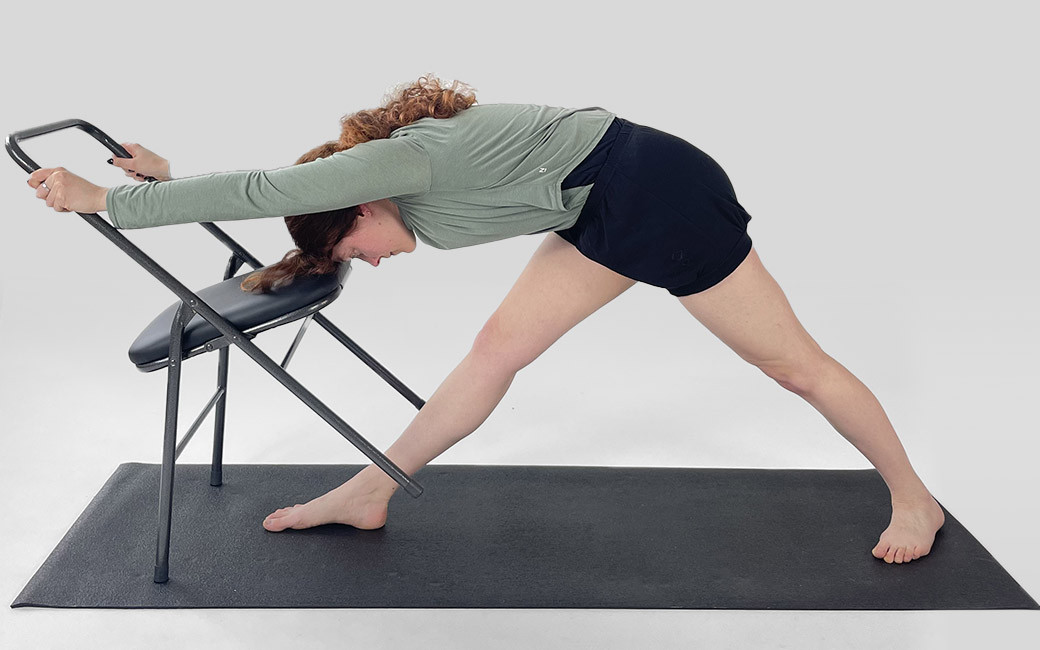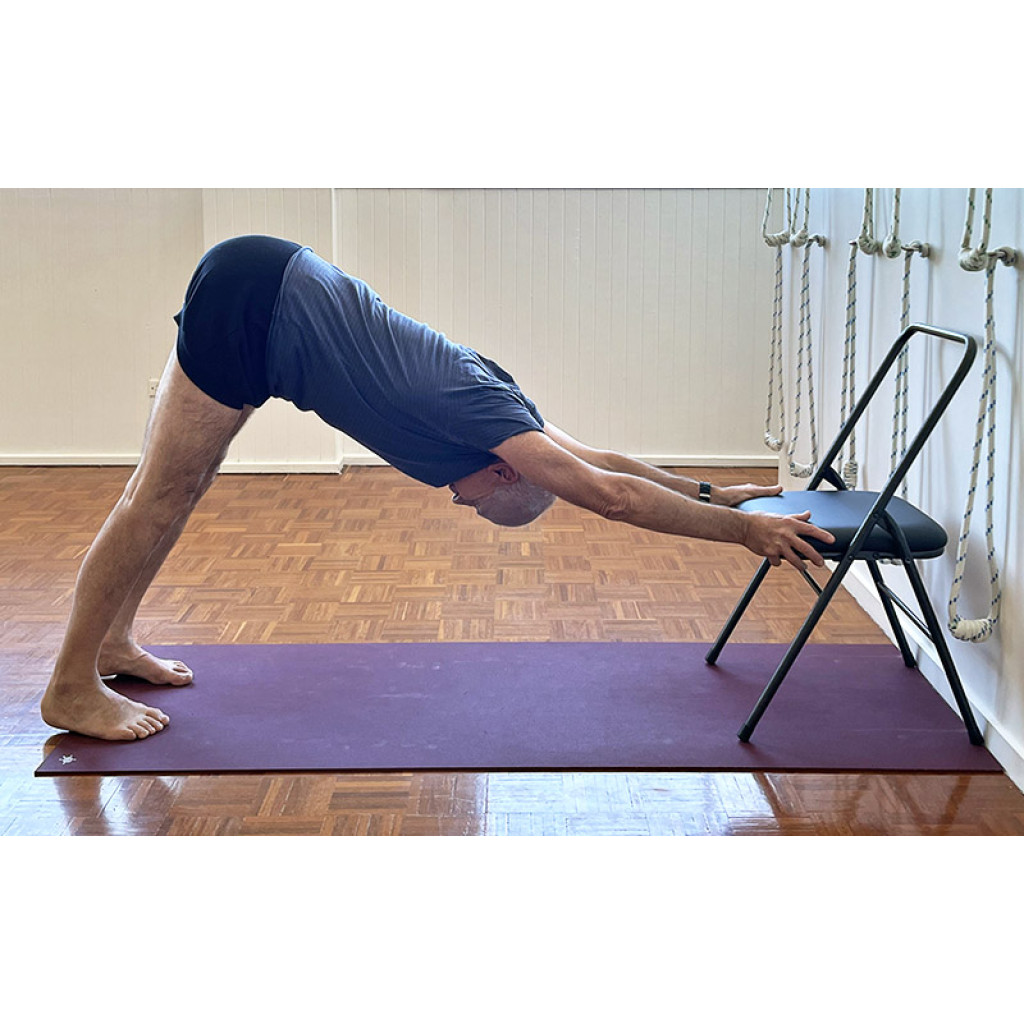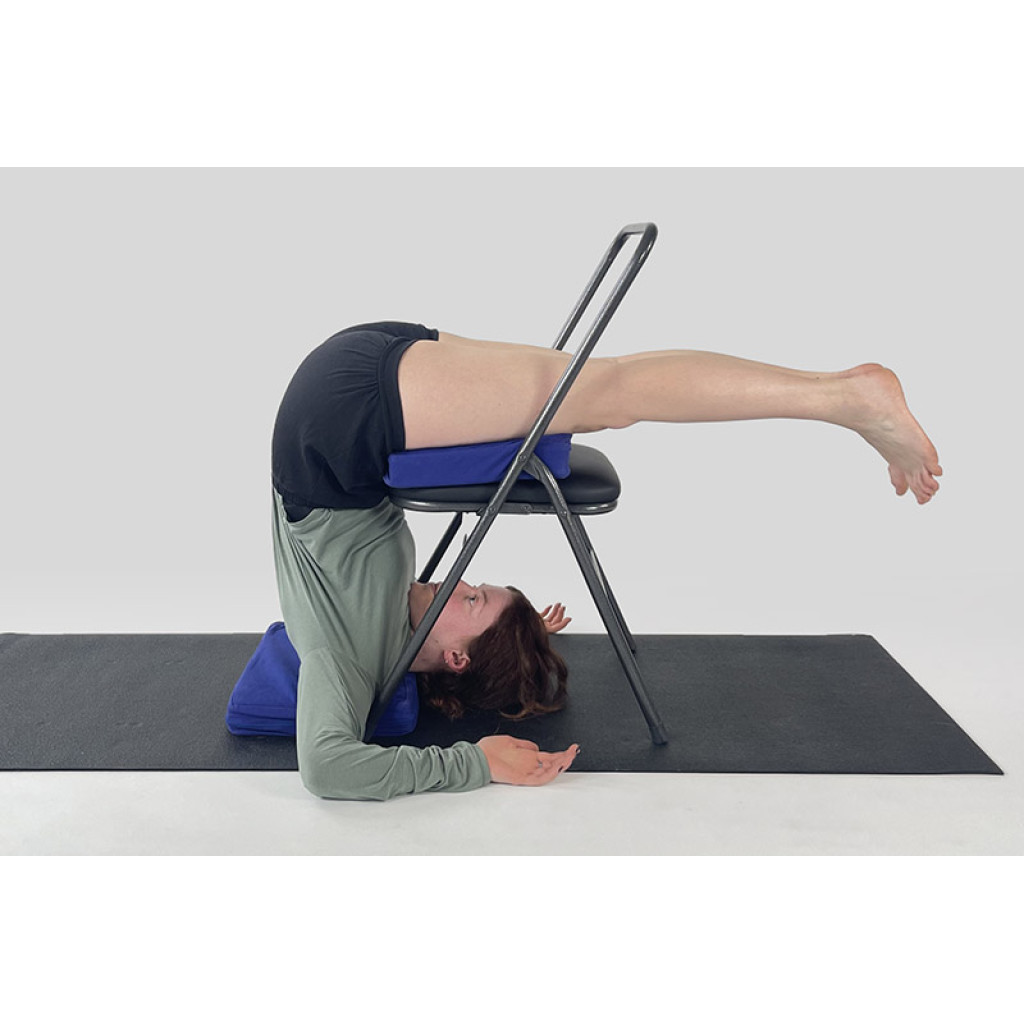Australia’s leading yoga equipment supplier
Up to 35% off products and all orders $750+ 5% off, $1500+ 10% off or $2500+ 12.5%. No ABN or application required.
Australia’s leading yoga equipment supplier
Up to 35% off products and all orders $750+ 5% off, $1500+ 10% off or $2500+ 12.5%. No ABN or application required.
Yoga is a practice that encompasses more than just physical postures; it is a journey of self-discovery, mindfulness, and balance. As yoga has evolved, so have the tools that aid in its practice. One such tool that has gained popularity is the yoga chair. In this guide, we will explore the benefits and applications of using a yoga chair, focusing specifically on the iYoga Chair, a versatile prop designed by iYogaprops to enhance your yoga practice.
We’ll delve into the Sanskrit names for the poses (asanas), how the yoga chair can be used to support and deepen these asanas, and the ways in which it can bring new dimensions to your yoga journey. Whether you are a seasoned yogi or a beginner, the yoga chair can provide valuable assistance and inspiration in your practice.

The concept of using props in yoga is not new. B.K.S. Iyengar, one of the most influential yoga teachers of the 20th century, introduced the use of props, including the yoga chair, to help practitioners of all levels achieve proper alignment and experience the full benefits of each asana. The yoga chair, specifically, evolved as a tool to assist in balance, support the body in challenging poses, and make yoga more accessible to people with physical limitations.
The iYoga Chair is a modern interpretation of this classic yoga prop. Designed by iYogaprops with durability, strength and functionality in mind. A sturdy steel chair with padded seat it features original adaptations including:
The iYoga Chair is an excellent addition to any yoga practice. It provides support in both simple and advanced poses, helping practitioners to achieve better alignment, deepen stretches, and safely explore more challenging asanas.
One of the primary benefits of the yoga chair is its ability to make yoga more accessible. For beginners, seniors, or those with physical limitations, the chair can serve as a vital tool to help build strength, flexibility, and confidence. The Iyoga Chair allows practitioners to modify poses, making it easier to perform them with correct alignment and without straining.
Alignment is key in yoga, as it ensures that the body is in a safe and effective position. The yoga chair helps in maintaining proper alignment, especially in standing poses like Tadasana (Mountain Pose) and Virabhadrasana I(Warrior I Pose). By providing a stable base, the chair allows you to focus on engaging the right muscles and achieving correct posture. This is crucial for avoiding injuries and getting the most out of each pose.
For those recovering from injuries or dealing with chronic pain, the yoga Chair can be a game-changer. It provides support in poses that might otherwise be difficult or painful, allowing practitioners to continue their yoga practice without risking further injury. For example, in Adho Mukha Svanasana (Downward-Facing Dog), the chair can be used to take some of the weight off the wrists and shoulders. This makes the pose more accessible and less likely to cause strain.
Tadasana is the foundation for many standing poses. Using the yoga chair in Tadasana can help you engage the core and lengthen the spine effectively. Stand behind the chair, holding the backrest with both hands. This support allows you to focus on lifting through the crown of the head and grounding through the feet, creating a strong and stable posture.
Adho Mukha Svanasana is a staple in many yoga practices, but it can be challenging for those with tight hamstrings or wrist issues. Modify the pose by using a yoga chair. Place your hands on the seat of the chair instead of the floor. This elevates the upper body and reduces the intensity of the stretch in the hamstrings while taking pressure off the wrists and shoulders.

Uttanasana is a deep forward bend that stretches the hamstrings, calves, and spine. To use the iYoga Chair in this pose, place the chair in front of you and rest your hands on the seat as you fold forward. This modification reduces the intensity of the stretch, making it easier for beginners or those with tight hamstrings to perform the pose correctly.
Sarvangasana is a powerful inversion that requires strength and balance. For those who wishing to do a more restorative version, the yoga chair offers a safe alternative. Position the chair with back to the wall. Sit sideways on the chair, then in one movement swing your legs vertically up the wall laying your back on the seat and sliding your buttocks through to the wall. From there, arch your head back to the floor as you slowly slide down off the chair until shoulders rest on a folded blanket, iYoga cushion or a bolster, head to the floor and chin tucked in. At the same time arms reach through the chair to grasp the back legs. This supported version reduces strain on the neck and shoulders, making it safer for those with neck issues.

Halasana is a deep stretch for the back and shoulders that also stimulates the digestive organs. To use a yoga chair in this pose, prepare for shoulder stand in the normal way. Then lower your legs to rest the feet on the seat of the chair. This variation supports the back and reduces the intensity of the stretch, making the pose safer for those with limited flexibility. For a more restorative variation pull the chair in closer until the thighs rest on the chair.
Sirsasana is often referred to as the king of all asanas due to its numerous benefits, including improved circulation and mental clarity. The yoga chair can aid balance and alignment in this challenging inversion. Position the chair with back to the wall. Set yourself for Sirsasana in front of the chair. You can either keep the body straight resting your back against the chair or drop the buttocks back onto the chair for a more supported version with less weight on the head and therefore the neck.
Urdhva Dhanurasana is a challenging backbend that requires strength, flexibility, and control. The iYoga Chair can provide support and stability as you work toward mastering this pose. Begin by lying through the chair on your back with your feet on the floor and your hands to the floor on the other side. As you push into your hands and feet to lift your body, the chair helps to support the back and shoulders, allowing you to focus on opening the chest and engaging the core.
Restorative yoga is a gentle form of yoga that focuses on relaxation and healing. The iYoga Chair is an excellent prop for restorative practices, allowing you to relax fully into each pose without straining the body. Many of the ones described above have a restorative application.
Back pain is a common issue that can be alleviated with the help of yoga. The iYoga Chair can be used to support the spine in various poses, helping to relieve pressure and reduce pain. For example, in Ardha Uttanasana (Half Forward Bend), you can place your hands on the chair to create a gentle stretch in the back without overexerting yourself.
The iYoga Chair is particularly beneficial for seniors and individuals with limited mobility. It provides stability and support, making it possible to practice yoga safely and comfortably. Seated poses, such as Baradvajasana (Seated Twist), can be performed with the help of the chair to maintain balance and achieve a deeper stretch.
Incorporating the iYoga Chair into your daily yoga routine at home can be a transformative experience. Whether you are following a specific sequence or just exploring different asanas, the chair can be used to support and enhance your practice. Start with a few basic poses and gradually incorporate more advanced variations as you become more comfortable with the chair.
The iYoga Chair can be used in combination with other yoga props, such as blocks, straps, and bolsters, to create a fully supported practice. For example, you can use the chair to support your back in Supta Virasana (Reclining Hero Pose), while using a bolster under your knees for added comfort. Experiment with different combinations to find what works best for you. The related Benger attachment is also useful for this pose.
While the iYoga Chair is a valuable tool, it’s important to use it safely. Always ensure that the chair is on a stable surface and that you are using it correctly. If you are new to using a yoga chair, consider taking a class or watching instructional videos to learn how to incorporate the chair into your practice safely. Listen to your body and avoid pushing yourself too hard; the chair is there to support you, not to create additional strain.
The yoga chair is a versatile and valuable addition to any yoga practice, offering support, stability, and the opportunity to explore poses in new ways. The iYoga Chair, in particular, is designed to enhance your practice. Whether you are a beginner looking for support in basic poses or an advanced practitioner seeking to deepen your practice.
The iYoga Chair is more than just a prop. It’s a tool that can help you connect more deeply with your practice, explore new dimensions of movement, and maintain a consistent yoga routine regardless of your physical limitations. By incorporating the iYoga Chair into your practice, you open the door to a more accessible, enjoyable, and sustainable yoga journey.
Whether you are looking to improve alignment, prevent injuries, or simply find new ways to challenge yourself, the yoga chair can be a powerful ally on your path to physical and mental well-being. Embrace the versatility and support that the iYoga Chair offers, and discover how it can transform your yoga practice.
Incorporating a yoga chair into your practice can significantly enhance your experience, providing support and allowing you to explore a broader range of asanas safely. The iYoga Chair is an excellent choice for yogis of all levels, offering durability, stability, and versatility. Whether you’re using it for support, deepening your asanas, or simply adding variety to your practice. The iYoga Chair can help you achieve your yoga goals.